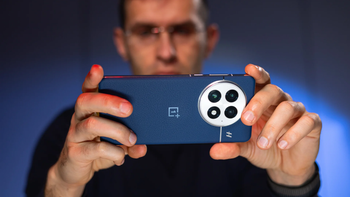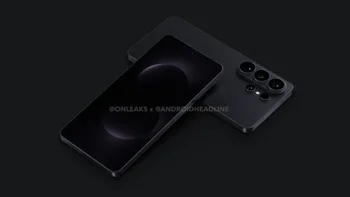Here's what instructions Judge Koh gave to Apple v. Samsung jurors

Judge Lucy Koh who's presiding the Apple v. Samsung case has sent out a document to the nine selected jurors, explaining them the rules of the case, and giving them guidance as to how they should react to what's happening in the court in order to be able to reach the right verdict.
The document is quite long, so we won't be publishing it here in its entirety, but will only show you some of the more interesting parts of it. The full thing can be accessed via the source link below.
Right off the bat, Judge Koh makes it clear for the jurors that shouldn't be influenced by any personal beliefs, preferences, opinions or sympathies. The decision of the jurors should be exclusively based on the evidence, which the two parties are going to present:
The jurors are also told not to communicate with anyone regarding the trial, as well as to stay away from information about the case when outside the court. This is required in order to guarantee a fair trial for the parties:
Note-taking also seems to be well-received inside the courtroom:
After these, and some other general guidelines, Lucy Koh informs the jury about the essence of patents and the exact patents at issue:
Then, she goes into a little bit more detail regarding the claims of both parties:
OK, people, we'll stop right here. We don't have a limit on the number of characters in a single post, but if we had one, we'd have surely reached it already. As we said, if you find it interesting, you can read the whole document by visiting the source link.
We now that the trial is still young, but... which side are you on?
source: DocumentCloud
Right off the bat, Judge Koh makes it clear for the jurors that shouldn't be influenced by any personal beliefs, preferences, opinions or sympathies. The decision of the jurors should be exclusively based on the evidence, which the two parties are going to present:
It is your duty to find the facts from all the evidence in the case. To those facts you will apply the law as I give it to you. You must follow the law as I give it to you whether you agree with it or not. And you must not be influenced by any personal likes or dislikes, opinions, prejudices, or sympathy. That means that you must decide the case solely on the evidence before you. You will recall that you took an oath to do so.
The jurors are also told not to communicate with anyone regarding the trial, as well as to stay away from information about the case when outside the court. This is required in order to guarantee a fair trial for the parties:
Do not communicate with anyone in any way and do not let anyone else communicate with you in any way about the merits of the case or anything to do with it. This includes discussing the case in person, in writing, by phone or electronic means, via e-mail, text messaging, or any Internet chat room, blog, Web site or other feature. This applies to communicating with your fellow jurors until I give you the case for deliberation, and it applies to communicating with everyone else including your family members, your employer, and the people involved in the trial, although you may notify your family and your employer that you have been seated as a juror in the case. But, if you are asked or approached in any way about your jury service or anything about this case, you must respond that you have been ordered not to discuss the matter and to report the contact to the court.
Note-taking also seems to be well-received inside the courtroom:
During deliberations, you will have to make your decision based on what you recall of the evidence. You will not have a transcript of the trial. I urge you to pay close attention to the testimony as it is given. If at any time you cannot hear or see the testimony, evidence, questions or arguments, let me know so that I can correct the problem. If you wish, you may take notes to help you remember the evidence.
After these, and some other general guidelines, Lucy Koh informs the jury about the essence of patents and the exact patents at issue:
There are two basic types of patents in the United States: utility patents and design patents. In general terms, a "utility patent" protects the way an article is used and works. It also protects a method or process of making or doing something. On the other hand, a "design patent" protects the way an article looks. A design patent protects the ornamental design of an article of manufacture. "Ornamental design" means the shape of the design and/or the surface decoration on the design.
There are nine utility patents asserted in this case. Apple accuses Samsung of infringing United States Patent Nos. 7,469,381; 7,844,915; and 7,864,163. Utility patents are often referred to by their last three digits, so Apple's utility patents may be referred to in shorthand as the '381, '915, and '163 patents. Samsung accuses Apple of infringing United States Patent Nos. 7,675,941; 7,447,516; 7,698,711; 7,577,460; and 7,456,893. Samsung's utility patents may be referred to in shorthand as the '941, '516, '711, '460, and '893 patents. There are four design patents asserted in this case.Apple accuses Samsung of infringing four design patents. They are United States Patent Nos. D504,889, D593,087, D618,677, and D604,305. Design patents are often referred to by their last three digits, so the design patents here may referred to in shorthand as the D'889, D'087, D'677, and D'305 patents.
Then, she goes into a little bit more detail regarding the claims of both parties:
Apple filed this lawsuit against Samsung, seeking money damages from Samsung for allegedly infringing the '381, '915, '163, D'889, D'087, D'677, and D'305 patents by making, importing, using, selling and/or offering for sale the tablet and smartphone products that Apple argues are covered by claim 19 of the '381 patent, claim 8 of the '915 patent, claim 50 of the '163 patent, and the D'889, D'087, D'677, and D'305 patents. Apple also argues that Samsung's Korean parent, Samsung Electronics Company, actively induced the U.S. Samsung entities, Samsung Electronics America Inc., and Samsung Telecommunications America LLC, to infringe. Apple contends that Samsung's infringement has been willful.
Samsung denies that it has infringed the claims and patents and argues that, in addition, the claims are invalid. Invalidity is a defense to infringement.
Samsung has also brought claims against Apple for patent infringement. Samsung seeks money damages from Apple for allegedly infringing the '941, '516, '711, '460, and '893 patents by making, importing, using, selling and/or offering for sale Apple's iPhone, iPad and iPod products that Samsung argues are covered by claims 10 and 15 of the '941 patent, claims 15 and 16 of the '516 patent, claim 9 of the '711 patent, claim 1 of the '460 patent, and claim 10 of the '893 patent. Samsung also contends that Apple's infringement has been willful.
Apple denies that it has infringed the claims asserted by Samsung and argues that the claims asserted by Samsung are invalid, and for the '516 and '941 patents, also unenforceable.
Samsung denies that it has infringed the claims and patents and argues that, in addition, the claims are invalid. Invalidity is a defense to infringement.
Samsung has also brought claims against Apple for patent infringement. Samsung seeks money damages from Apple for allegedly infringing the '941, '516, '711, '460, and '893 patents by making, importing, using, selling and/or offering for sale Apple's iPhone, iPad and iPod products that Samsung argues are covered by claims 10 and 15 of the '941 patent, claims 15 and 16 of the '516 patent, claim 9 of the '711 patent, claim 1 of the '460 patent, and claim 10 of the '893 patent. Samsung also contends that Apple's infringement has been willful.
Apple denies that it has infringed the claims asserted by Samsung and argues that the claims asserted by Samsung are invalid, and for the '516 and '941 patents, also unenforceable.
OK, people, we'll stop right here. We don't have a limit on the number of characters in a single post, but if we had one, we'd have surely reached it already. As we said, if you find it interesting, you can read the whole document by visiting the source link.
source: DocumentCloud
Follow us on Google News














Things that are NOT allowed:
To help keep our community safe and free from spam, we apply temporary limits to newly created accounts: